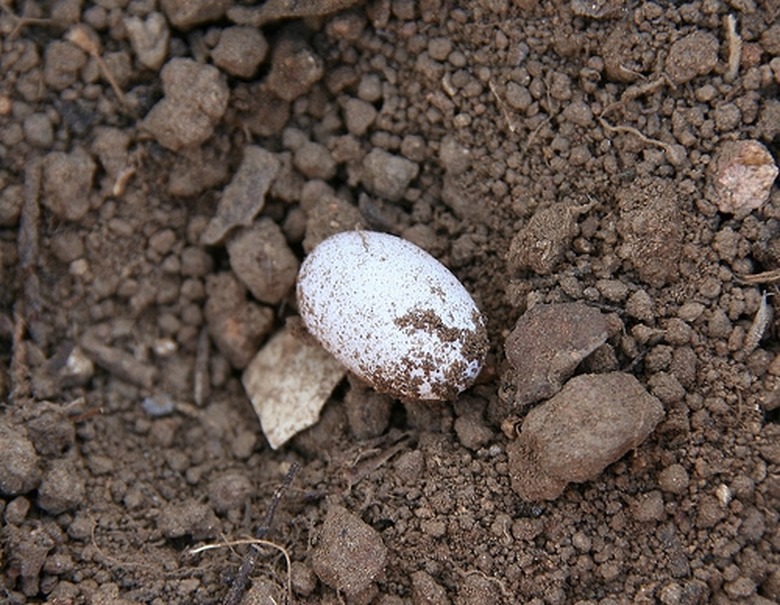Found Garden Snake Eggs? Here's How To Care For Wild Snake Eggs
Things Needed
-
Cage
-
Mulch
-
Mud
-
Marker
-
Thermometer
-
Snake egg
Warning
Do not rotate, twist or flip the egg or the snake inside will probably die. Snake eggs, though leathery and hard-looking, are very fragile.
Tending your garden, you spot something you never noticed before. At first glance, it looks like a rock, a large mushroom, or a forgotten child's ball. It looks leathery, and after a quick run to the Internet or the kids' snake book, you realize it's a snake egg. After a moment's hesitation, where you debate with yourself whether you'll kill it or care for it, you realize that having another snake around could be beneficial. Your garden will no longer suffer from the tender admonitions of rabbits and other small animals, and the snakes won't harm you either. So you decide to care for it. The only problem is you're not sure how.
Step 1
Mark the top of the egg. Do not ever rotate the egg. This can destroy the contents of the egg. Instead, mark the egg with a felt tip market or something so you can easily determine where the top of the egg is and not twist it or turn it. If you move it, move it very gently and be sure to keep the part that was on top at the top.
Step 2
Determine the type of egg. Learn the type of egg you're dealing with before it hatches. Some snakes have live babies, but you don't want to be surprised, though a garden snake could be helpful in your garden. Once you're sure of the type of snake egg, decide whether or not you want to keep it and hatch it or find another way of taking care of it.
Step 3
Make sure the egg is fertile. Make sure the egg is fertile. Healthy, fertile eggs will be cream-colored, look healthy and about the same size as other eggs. Infertile eggs will be shaped oddly, tan and smaller than the other eggs. Another way to test if they're fertile is to shine a light through the egg. This doesn't always work, as some shells are thick, but like your hand shines red under a flashlight, the egg will look red, as well.
Step 4
Keep the egg at least partially buried beneath some mud and mulch, which should be a little bit damp, but not so damp as to make the egg rot. The temperature should be between 80 and 85 degrees, which won't feel warm, but is warm enough to keep the egg happy and healthy, but not so warm that it will be cooked.
Step 5
Watch the egg hatch. After several weeks, the baby snake will hatch the egg with its special hatching tooth. Don't be surprised if the snake doesn't seem hungry at first as many do not feed until they're a couple of weeks old.
